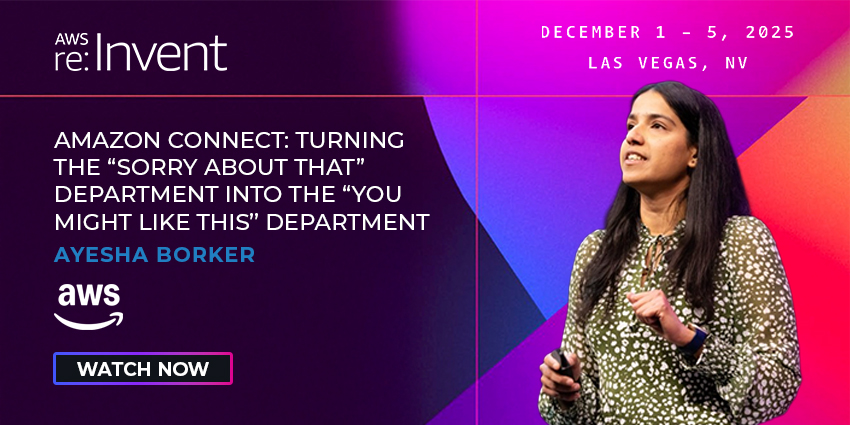Human contact center agents aren’t going anywhere any time soon.
In fact, Gartner predicts that by 2027, half of all businesses will abandon plans to shrink their customer service teams.
Cavell goes even further, forecasting that global human contact center roles will grow from 15.3 million in 2025 to 16.8 million by 2029.
Such statistics underscore how live agents remain a contact center’s most valuable asset.
Yet, they’re also a contact center’s most costly asset. Indeed, people typically account for up to 80 percent of their expenses.
These costs rise whenever an agent leaves, as the business pays for recruiting and training replacements. Meanwhile, the contact center also loses efficiency. That impacts customer satisfaction (CSAT).
Additionally, understaffing creates stress for remaining agents, which often leads to more turnover. It snowballs quickly, and that cycle is costly.
As such, agent retention is critical to improving not just business outcomes but also cornerstone customer and employee engagement outcomes.
While improving retention is tricky, there is a tonic: an effective agent empowerment strategy. Such a strategy starts by acknowledging a hard truth…
The Hard Truth
Here’s the hard truth: very few people aspire to be a contact center agent. It’s not typically on anyone’s vision board. Most people land in customer support roles by circumstance, not because it was a lifelong goal.
That reality can create resentment over time. Agents start questioning whether their work matters, whether they’re making an impact, or if they’re meant for something “better” – and, honestly, they might be.
Contact center leaders can’t fight this. But they can reframe the agent role, so instead of seeing the contact center as a dead end, agents see it as a catalyst for the future.
Think of it this way: this is a role where people learn communication, problem-solving, empathy, and resilience. These skills apply everywhere.
So, leaders must ask themselves: where does this person want to be, and how can we help them get there? By thinking this way, the job becomes more about development and growth, and less about performance metrics.
As such, the job isn’t just tolerable; it’s meaningful.
Focus on how this experience shapes them for what’s next, and accept that “next” might be outside the contact center.
That empowers the agent; they become the boss of their own future and are determined to stay with the business, as long as they perceive that they’re moving forward.
As Paul Hughes, Head of Customer Experience for the UK/I/SA at Mitel, explained: “Agents should feel they’re learning and adding value.
“Involve them in designing training and coaching programs. It’s not just a matter of adding tools, it’s about building new habits, roles, and expectations.”
Yet, a comprehensive agent empowerment strategy has three more essential elements.
These are all about giving agents more control over: when they work, where they work, and what they do. Here’s a closer look at each.
1. When They Work
Agents will stay longer if they can fit their work around their outside lives.
As such, learning their schedule preferences is becoming a much more normalized activity. But, it’s what the contact center does with that data that makes the difference.
Many have turned to automated scheduling software to wrap agent shifts around these preferences. But don’t just sit back and rely on the tech. Consider: can we add extra shift patterns that align with these preferences?
For instance, many contact centers have implemented slant schedules, where instead of agents working eight hours, five days a week, they work ten hours on Monday with an hour less every day. So, by Friday, they work just six hours. These schedules align with inbound demand, which typically drops throughout the week, and many people’s preference to build toward the weekend. Meanwhile, the agent’s core hours stay the same.
Alongside new shift options, think about the extra flex mechanisms that are possible to build into the schedule. Shift-swaps are the classic example. However, offering overtimes when the contact center is overrun, with the option of taking it back at a time that suits, is another possible lever.
2. Where They Work
It is key to understand preferences for in-office, remote, and hybrid work and consider how the contact center can support them.
However, there’s another often-overlooked part of this conversation: which channels are agents most often working on, and do they align with their preferences?
Also, agents must be empowered to move conversations across channels. For example, if an issue isn’t clear after a chat exchange, the agent should be able to switch to a call and resolve it quickly without losing any of the case context on their screen.
Meanwhile, an AI assistant should work alongside them, every step along the way, considering all that omnichannel context.
As Hughes summarized: “AI workflows can trigger actions during interactions, no matter where they happen. Yet, teams must trust the tools, and leaders must integrate AI as part of how work gets done, not as an afterthought.”
3. What They Do
AI is simplifying processes, cutting through the noise and distractions. But, before diving in, contact centers must define what meaningful work looks like for agents.
“If we remove tasks they enjoy, that can feel threatening,” Hughes noted.
“So, involve agents from the start, including in the design phase. We do a lot of discovery with agents, not just IT leaders.”
In bringing interested agents into the fold here, contact centers can also offer an opportunity to boost their AI knowledge and personal development.
Beyond processes, contact centers can also take a step back and ask: what contacts do you prefer to handle, and would you like to take on more?
From there, they can adjust the routing mechanism so that agents take on more of the contacts that most interest them.
Work With a Contact Center Provider That Gets It
“Without empowered agents, even the best technology won’t deliver great experiences,” summarized Hughes.
“Job satisfaction rises when agents feel trusted, have clarity, and maintain control. AI can support that, but only if the culture allows teams to own the change.”
As Hughes suggests, the human experience comes first for Mitel. Its AI assistance tools are designed to give agents fast, accurate insights. Yet, it’s not only delivering artificial intelligence, it’s supporting the human intelligence and culture behind the implementation.
That’s crucial. After all, it’s where transformations often fall short.
Now watch the new guide on best practices for workforce management in the AI-era.
Discover more about how Mitel can help empower agents and transform contact centers, here: www.mitel.com







